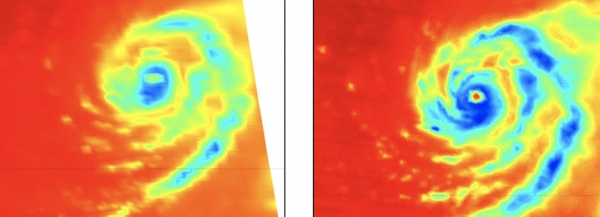NASA is launching the first two of six small satellites no earlier than June 12 that will study the formation and development of tropical cyclones almost every hour – about four to six times more often than is possible with current satellites. This is the first of three CubeSat launches for NASA’s Time-Resolved Observations of Precipitation structure and storm Intensity with a Constellation of Smallsats (TROPICS) mission. The remaining satellites will be placed into their orbits during two subsequent launches this year. If successful, the TROPICS satellites will be spread across three orbital planes to cover more of the globe more frequently.
“TROPICS will give us very frequent views of tropical cyclones, providing insight into their formation, intensification, and interactions with their environment and providing critical data for storm monitoring and forecasting,” said Scott Braun, research meteorologist at NASA’s Goddard Space Flight Center in Greenbelt, Maryland.
Collectively, the weather satellites currently in low-Earth orbit – such as NOAA-20, the joint NASA and National Oceanic and Atmospheric Administration Suomi NPP satellite, and others from NASA’s partners – revisit a storm once every four to six hours. “So we’re missing a lot of what’s happening in the storm,” explained Bill Blackwell, principal investigator for the TROPICS mission and a researcher at the Massachusetts Institute of Technology Lincoln Laboratory in Lexington, Massachusetts. The TROPICS constellation will give scientists more frequent updates, complementing the data collected by existing low-Earth orbit weather satellites and allowing scientists to see each storm from beginning to end.
Continue reading at NASA Earth Science News
Image via NASA Earth Science News


